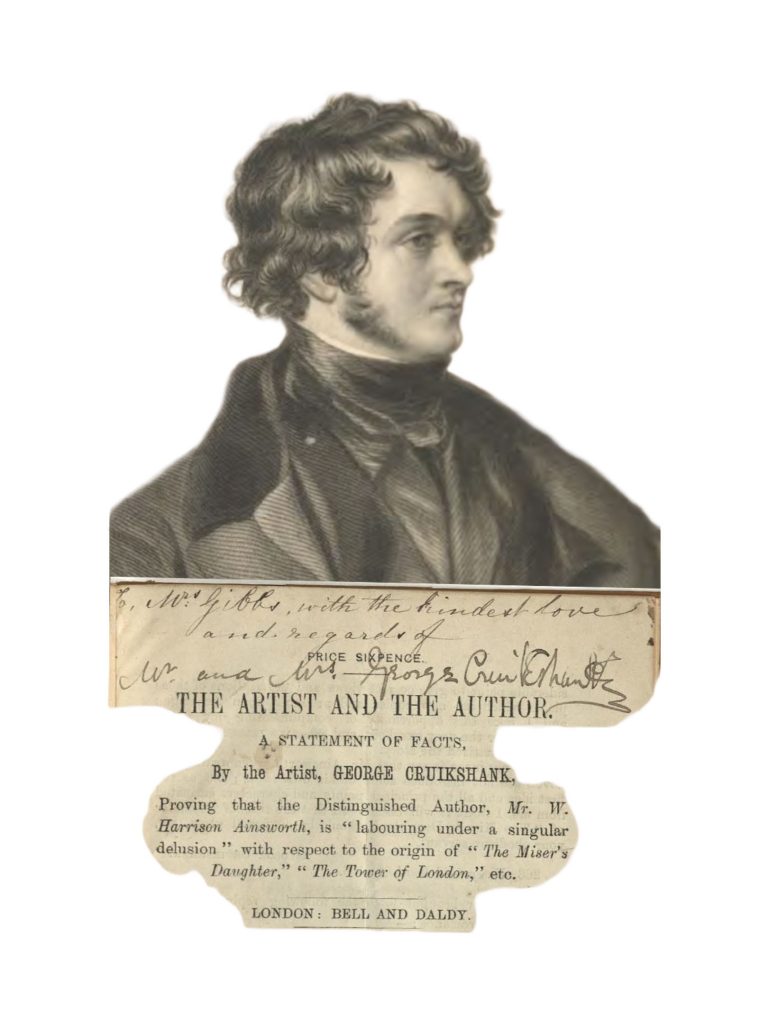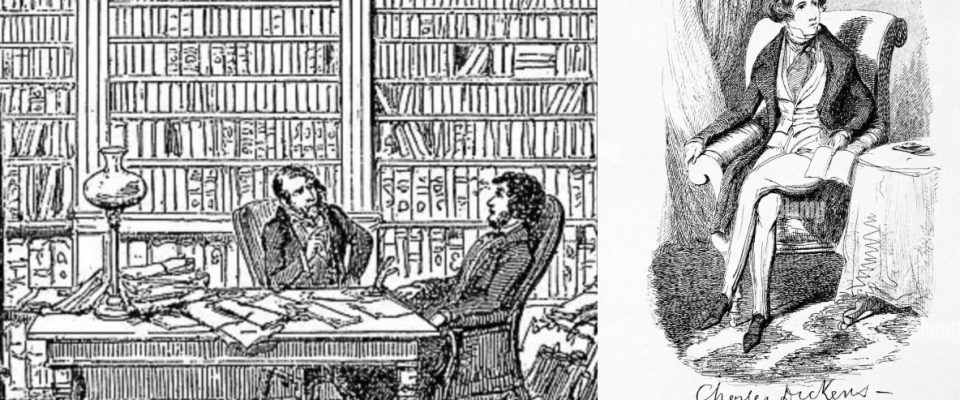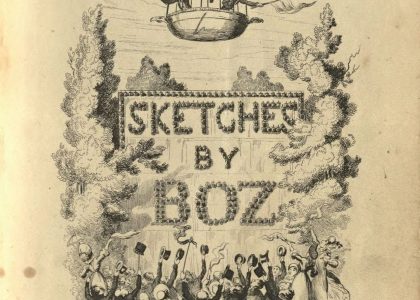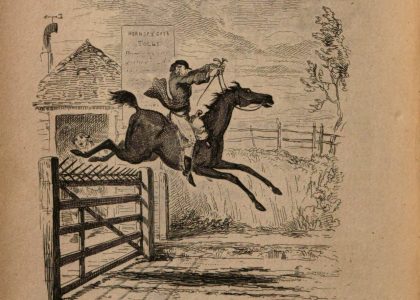Cruikshank! I do rejoice to see they name
Reckon’d with Ainsworth’s in the roll of fame!
Union most pregnant! That with grace doth bind
In faithfull bonds such pencil and such pen–
Kith bond to kin, and neither less than kindPoem attributed to V.V.D.D. in Ainsworth’s Magazine 1 (June 1842)

Well-established as a caricaturist in the ‘20s, Cruikshank turned to the more lucrative work of book illustration in the 1830s. From around 1830 to 1845, book illustrations made up the bulk of his commissions. Cruikshank illustrated works by best-selling authors like William Ainsworth, Charles Dickens, Henry Fielding, Sir Walter Scott, Oliver Goldsmith, Harriet Beecher Stowe, Washington Irving, Laurence Sterne, Daniel Defoe and more. As scholar John Buchanan-Brown observes, Cruikshank “stands alone among both British and Continental book-illustrators as the direct link between the eighteenth century and the Romantic age,” from caricature to literary realism.
Many of Cruikshank’s caricatures and illustrations prior to his illustrative turn were printed in ephemeral forms. It was his illustrations for the novels of Dickens and Ainsworth that catapulted his career. This granted him and his books the longevity and cultural influence he felt he deserved. In fact, his claims to creative authority and invention led to very public breaks with his collaborators. In his pamphlet The Artist and the Author (1872), Cruikshank claimed that Dickens and Ainsworth had used his ideas in their novels without credit.
“I lay no claim to anything that has originated from the mind of Mr. Ainsworth, or any other man, but where the original idea has emanated from my own mind, that I feel I have a right to claim, and by that right I will stand firm, and I trust that at no distant date I may be able to publish what I have already stated, to show the world how these ideas originated in my mind, and why I wished to place them before the public.”
George Cruikshank, The Artist and the Author
Cruikshank was adept at matching his illustrations to a novelist’s themes. Indeed, the reverse may be more accurate: that writers took their cues from his characterizations. In this section you will see his masterpiece illustrations for some of Ainsworth’s and Dickens’ novels, which capture the symbiosis of word and image on the page. As William Makepeace Thackeray claimed of Ainsworth’s Jack Sheppard (1839-40), and it might be said of others, “Let any reader of the novel think over it for a while, now that it is some months since he perused and laid it down–let him think and tell us what he remembers of the tale? George Cruikshank’s pictures–always George Cruikshank’s pictures.”




 Albin O. Kuhn Library & Gallery
Albin O. Kuhn Library & Gallery